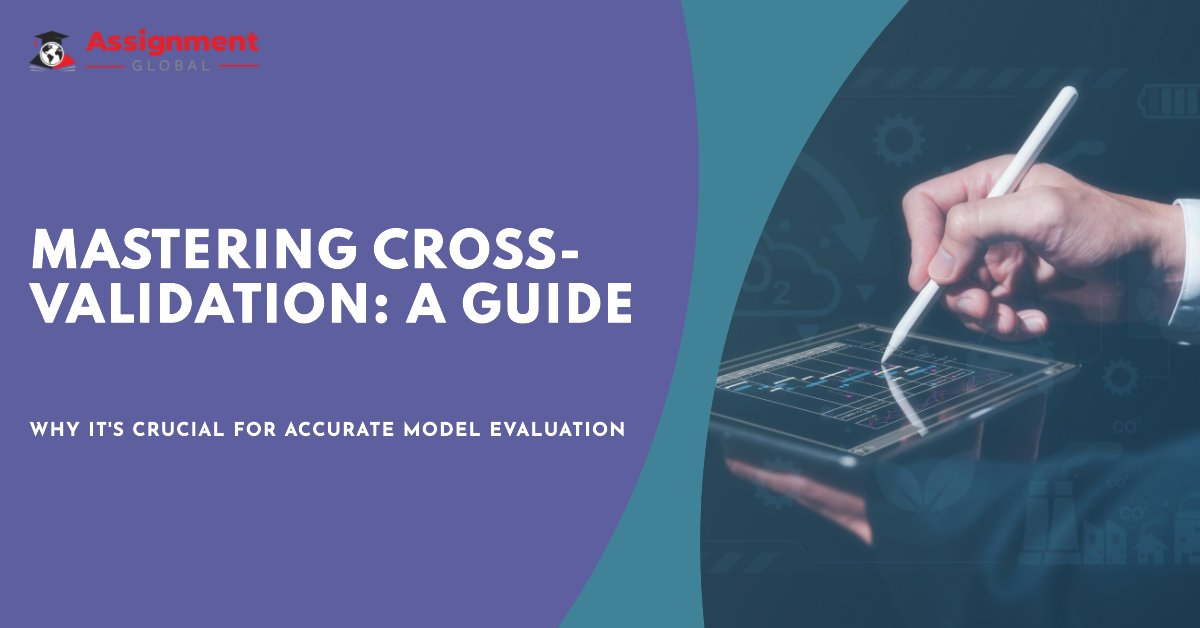A Comprehensive Guide to Cross-validation and Why It's Important
In-depth exploration and consider the invaluable role of Machine Learning Homework Solutions, it becomes evident that students and aspiring machine learning enthusiasts possess the tools needed to embark on a transformative journey toward mastering cross-validation techniques.

In the discipline of machine learning, cross-validation is crucial as a method to evaluate and improve model performance. We will examine the nuances of cross-validation, its importance, and how it might revolutionise the creation of machine learning models in this thorough book. We'll also discuss the idea of machine-learning homework solutions, which can help students navigate the cross-validation assignment environment by offering helpful support and direction.
Understanding Cross-validation
To embark on the journey of comprehending the significance of cross-validation, it is imperative that we lay a solid foundation by delving into what cross-validation entails and why it holds such paramount importance in the realm of machine learning. In this section, we shall define cross-validation within the context of machine learning, unveiling its pivotal role in assessing the efficacy and reliability of various models.
At its core, cross-validation is a robust statistical technique used to evaluate and validate the performance of machine learning models. It offers a rigorous means to estimate how well a model will generalise to unseen data, which is a fundamental concern in machine learning. By simulating the process of training and testing models multiple times using different subsets of data, cross-validation provides a more comprehensive and reliable assessment compared to traditional validation methods.
Now, let's acquaint ourselves with some key terms and concepts that will be instrumental in our exploration of cross-validation. One of the central notions is k-fold cross-validation, a technique that involves partitioning the dataset into 'k' subsets or folds. These folds are used iteratively, with 'k-1' subsets used for training the model and the remaining fold for validation. This process is repeated 'k' times, ensuring that each fold serves as the validation set exactly once.
Additionally, we'll delve into the concept of a validation set, which plays a critical role in cross-validation. The validation set is a portion of the dataset that is set aside for assessing the model's performance during the cross-validation process. Its independence from the training data ensures a rigorous evaluation of the model's generalisation capabilities.
By understanding these foundational elements of cross-validation, we pave the way for a more profound exploration of its practical applications and benefits in the context of machine learning. This comprehension will empower us to grasp the significance of cross-validation in ensuring the robustness and reliability of machine learning models.
Types of Cross-validation
Next, we'll explore the various methods of cross-validation. We'll dive into the details of three common techniques: k-fold cross-validation, Leave-One-Out cross-validation, and Stratified cross-validation. By understanding the strengths and limitations of each method, we'll be equipped to choose the most suitable approach for different scenarios.
Importance of Cross-validation
The importance of cross-validation cannot be overstated in the world of machine learning. We'll discuss how cross-validation helps us avoid overfitting, assess the generalisation capabilities of our models, and fine-tune hyperparameters effectively. Real-world examples will illustrate the profound impact that cross-validation can have on the performance of machine-learning models.
How to Implement Cross-validation
Now, it's time to roll up our sleeves and get practical. We'll provide a step-by-step guide on how to implement cross-validation, from splitting your data into training and validation sets to performing multiple cycles of training and evaluation. Code examples in popular programming languages, such as Python, will be included to demonstrate the process.
Interpreting Cross-validation Results
Cross-validation results must be interpreted with great attention to detail. We'll define typical cross-validation assessment measures including accuracy, F1-score, and RMSE, and demonstrate how to apply the results to draw actionable conclusions. You'll discover how to spot possible problems and base judgements on the findings of cross-validation.
Cross-validation and Model Selection
Cross-validation isn't just about evaluating a single model; it's a powerful tool for model selection. We'll discuss how cross-validation can be used to compare different machine-learning algorithms and highlight examples of how it aids in selecting the best model for a specific task.
Challenges and Pitfalls
Cross-validation has its own set of difficulties and dangers, like any useful technique. We'll address these issues, including data leakage, imbalanced datasets, and the risk of overfitting during hyperparameter tuning. Tips and strategies for overcoming these challenges will be provided.
Machine Learning Homework Solutions for Cross-validation
For students seeking to master the art of cross-validation, Machine Learning Homework Solutions can be a guiding light. We'll explore how these solutions offer expert guidance, practical exercises, and assignments related to cross-validation. By utilising these resources, students can enhance their understanding and proficiency in this critical area of machine learning.
Conclusion
In summary, cross-validation stands as a fundamental pillar within the domain of machine learning, and its adept utilisation holds the potential to significantly enhance the robustness and efficacy of models. As we conclude this in-depth exploration and consider the invaluable role of Machine Learning Homework Solutions, it becomes evident that students and aspiring machine learning enthusiasts possess the tools needed to embark on a transformative journey toward mastering cross-validation techniques.
The knowledge gained from this comprehensive guide empowers individuals to not only comprehend the intricacies of cross-validation but also to harness its capabilities for optimising machine learning models. Whether you are a student seeking academic excellence or an aspiring data scientist aiming to excel in the field, the skills acquired through cross-validation proficiency will undoubtedly be a valuable asset.
As the landscape of machine learning continues its dynamic evolution, the relevance of understanding and adeptly employing cross-validation remains unwavering. In an era defined by data-driven decision-making and AI-driven innovations, cross-validation emerges as a beacon of reliability, ensuring that machine learning models can navigate the complexities of real-world data with grace and precision. By embracing this skill, individuals position themselves to thrive in the ever-expanding horizons of the machine-learning realm.
In essence, cross-validation transcends being a mere technique; it becomes a key to unlocking the full potential of machine learning. People can confidently step into the future of data-driven discovery, equipped with the knowledge and skills necessary to make significant contributions to the field of machine learning, with the help of resources like Machine Learning Homework Solutions and a solid understanding of cross-validation principles.
What's Your Reaction?





















